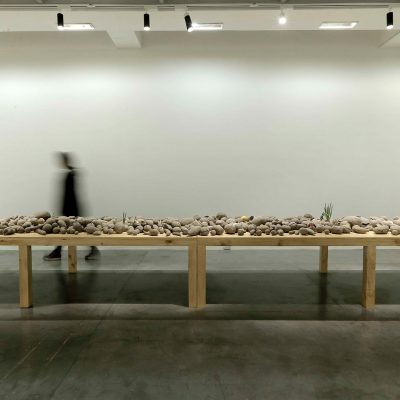
A selection of things
The thinning of the banana plant is a cultivation practice employed in order to assure the productivity of banana crops in many regions of South America, including Peru and Brazil. As the new roots of the plant grow and come closer to the surface, the person in charge makes a selection of the suckers – the “daughters” – with the best chances of growing and bearing fruit. Those that do not fulfill the requirements to give a truly good crop are eliminated by cutting the stem and then avoiding that it grow back. This cutting is done from inside out so the mother plant is not harmed, and the cut part is quickly covered. The daughters that remain are cut in such way that the suckers have the right shape to allow an ascending growth of the plant.
This selection mechanism, more than the banana production itself, could be seen as similar to other processes more closely connected to our daily chores. Over time, our mind takes to the task, consciously and unconsciously, of electing which experiences should be kept and which should be left behind; this selection also implies a discarding process. In this sense, rescuing those “unaffiliated” memories means taking other directions. It means apprehending the world by redesigning that of which few clues are left, and by questioning the linear, rational history of how we relate and adapt to time.
Nydia Negromonte decides to follow those paths. The repetition of memories – always a bit diffuse – in the everyday objects in the background of the pictures in her family archive connects with herself and creates new meanings. Reality settles best at the moment of synchrony than at any other time or place: photographs of places now located far away in memory, found objects used somewhere else, in another moment, smells, tastes, stories that resonate. Even so, installations created from natural elements or images that remit to them – water, earth, air – create new ways to understand the meaning of sprouting, growing, adapting. They are resilient works and bodies that, upon finding themselves in uncertain surroundings, produce spaces that are favorable to their own development from new connections, thus generating microclimates, relations and communities of common growth.
The works selected for this exhibition are clues to a route marked by repetition; in them, the same coincidences happen once and again. These assertive encounters are what guide Nydia – back in our city some 20 years later – in her research, so counter-current, so instinctive and sensorial, of new ways of understanding her own story and of connecting to common places. Those are objects made either at her own home or shop or for specific spaces in different cities in Brazil. Many of those – collaborative pieces elaborated with friends – are rebuilt today to generate new relations and share experiences in a city that has been constantly reshaped in her memory. In contact with Lima’s humidity, new reactions will come, more coincidences, other forms of growth.